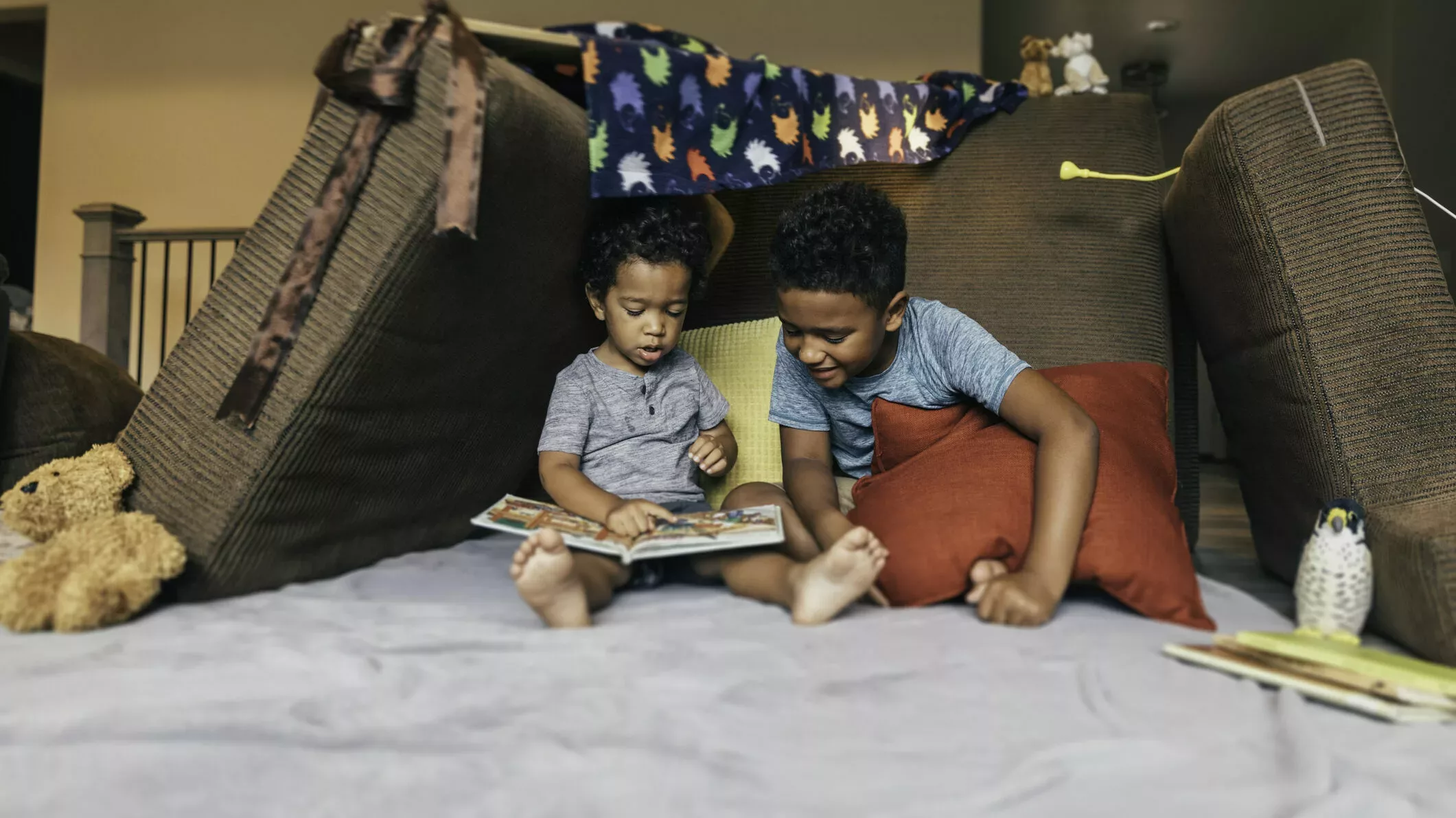
What makes a home a home? It could be the music you play, the desserts you bake, the photos you hang on your walls, the bed in which you tuck your child. Your home is as much a physical environment as it is an expression of who you are and how you’re choosing to raise your little one.
That said, parents who make an effort to put age-appropriate books on display—and within reach—of their children do them a great service. Making your home a place where young readers are encouraged to develop into avid readers can help your child expand their imagination, enhance their vocabulary, and discover the satisfaction that comes with opening a book and finding joy within its pages.
The Benefits of Reading
Reading to your child benefits them in myriad ways. One way is by strengthening their bond with you. Whether your child is sitting next to you on your couch or in the comfort of your lap, and no matter what book you decide to read, taking the time to unwind together and enjoy the words and pictures in front of you can make your child feel special. If your child is able to talk, they will also likely feel comfortable sharing their thoughts, feelings, and reactions to the book with you, which can be both sweet and insightful.
Studies show that reading with your child also improves their cognitive skills—how to solve problems, make decisions, recall certain facts/details, and process the sights, sounds, and other sensory-related elements around them.
In addition to helping children establish phonemic awareness and build their comprehension skills, reading also inspires children to value creativity, maintain their concentration, and learn moral virtues such as kindness, empathy, and courage.
For all these reasons and more, it’s incredibly worthwhile to make your home a place where you can support your child’s interest in books, including those that promote second language reading (bilingual, English Spanish books, for instance).
How to Create an Inviting Space for Your Reader or Pre-Reader
Here are some tips to cultivate a home environment that emphasizes books over screens. (We’re not suggesting that screentime is all bad, by the way, but booktime is way better!)
- Place a shelf, bookcase, or book cabinet in your child’s bedroom so you can make books as readily available as their toys. May we also recommend a book rack? This option allows your child to view the books’ covers as opposed to their spines, and this can be a fun way to exhibit your child’s book collection.
- Consider installing a book nook in your child’s room, playroom, or in another ideal space. Many book nooks on the market feature a bookcase with a built-in seat cushion. A book nook can mirror what Montessori classrooms around the world refer to as a “peace corner”—a calm place your child can go to read, relax, and spend some time alone. In many Montessori classrooms, a peace corner is complemented by soft lighting, flowers, throw pillows, and/or blankets. In other words, feel free to make this corner as comfy and cozy as you see fit.
- Another idea is to purchase an indoor tent—one that you can, if you’d like, call “The Reading Tent.” This is a place your child can go when they want to read some books in solitude. Children love playing pretend, using flashlights, and crawling into a private space—and this can all be conducive to having an enjoyable reading experience. (Sidenote: if you’re not into the tent idea, making a blanket fort would be just as great!)
- Curate a thoughtful collection of age-appropriate books that will beckon your child’s attention. A well-rounded book collection features books containing different languages. A picture book written in Spanish, for example, makes your child recognize that more than one language exists—and what a gift it is to your child when you can cultivate an interest in second language reading. Raising a bilingual child paves an even wider path for their success now as well as in the future.
- Your home can be the perfect place for you to create reading incentives. You know your child best, so think about what would motivate them to read. You could place a lockable or out-of-reach treasure chest in the room in which they spend the most time. The treasure chest can be filled with prizes such as stickers, erasers, and/or temporary tattoos. You and your child can keep track of how many books they read and once they reach a certain number, they get to pick a prize from the treasure chest. Children appreciate rewards, not to mention feeling a sense of accomplishment.
- While this tip may seem like a “given,” we’re sharing it anyway because of its importance. Your child admires you, and, therefore, they often model your behavior. If you want your child to acquire a fondness for reading, consider the advantages of having your own book collection on display in your home. When your child sees that you admire books—and, better yet, witnesses you pluck a book from your shelf and read it—they will recognize that reading isn’t just for kids; it’s for grown-ups, too!
- If you own a smart speaker, use it to play audio books in your home. Children not only benefit from using their eyes to read, but also their ears to listen. You may be pleasantly surprised to find just how much they enjoy hearing a book “come to life” courtesy of your speaker system.
- Up for an experiment? Try removing your television from your primary living space—placing it in a guest room or another room where it is not as conveniently located and tempting to watch. Your space will change quite dramatically, forcing you to think about how you can make it one where noses go in books, not in front of screens. In this space, you may even wish to “ban” smartphones and other screens, for this could be the sacred space where books are read and stories are told.
- If you want your child to read books inside your home, venture “outside the box.” Visit your local library’s children’s department and borrow some books. Also, make a point to “order in”—by this we mean you can summon new books to your doorstep by purchasing a book box and/or enrolling in a book box subscription.
A Final Note From Your Friends at Sol Book Box
We hope the tips we’ve supplied will help you support your child in their reading journey. Pardon our pun, but to nurture a bookworm, think of your home as a garden—you have an incredible opportunity to sow seeds that matter, seeds that will transform your child by helping them grow and keeping them intellectually nourished (and consistently curious!) for decades to come.




